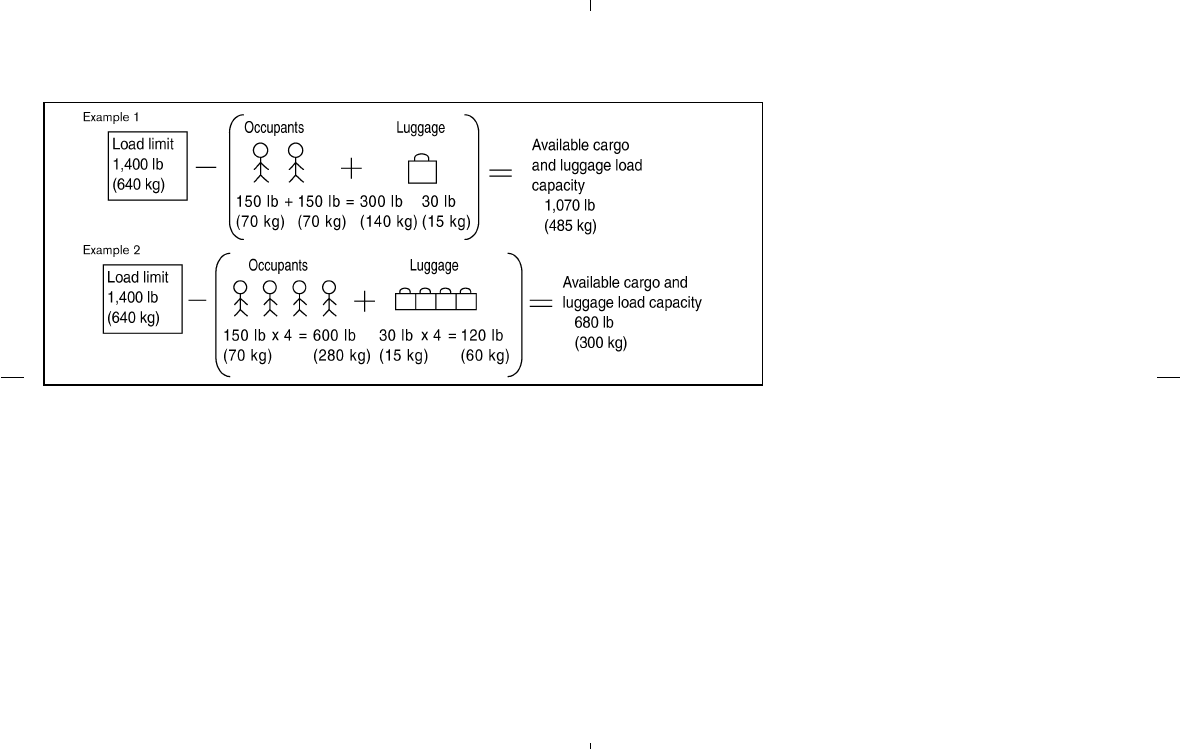
VEHICLE LOAD CAPACITY
Do not exceed the load limit of your vehicle
shown as “The combined weight of occupants
and cargo” on the Tire and Loading Information
label. Do not exceed the number of occupants
shown as “Seating Capacity” on the Tire and
Loading Information label.
To get “the combined weight of occupants and
cargo”, add the weight of all occupants, then
add the total luggage weight. Examples are
shown in the illustration.
Steps for determining correct load
limit
(1)Locate the statement “The combined weight
of occupants and cargo should never exceed
XXX pounds or XXX kilograms” on your
vehicle’s placard.
(2)Determine the combined weight of the driver
and passengers that will be riding in your
vehicle.
(3)Subtract the combined weight of the driver
and passengers from XXX pounds or XXX
kilograms.
(4)The resulting figure equals the available
amount of cargo and luggage load capacity.
For example, if the “XXX” amount equals
1,400 lbs. and there will be five 150 lb.
passengers in your vehicle, the amount of
available cargo and luggage load capacity is
650 lbs. [1,400 − 750 (5 x 150) = 650 lbs.]
(5)Determine the combined weight of luggage
and cargo being loaded on the vehicle. For
safety, that weight must not exceed the avail-
able cargo and luggage load capacity calcu-
lated in Step 4.
(6)If your vehicle will be towing a trailer, load
from your trailer will be transferred to your
vehicle. Consult this manual to determine
how this reduces the available cargo and
luggage load capacity of your vehicle.
STI0365
Technical and consumer information 9-15
੬ 04.4.5/Z50-D/V5.0 ੭


















